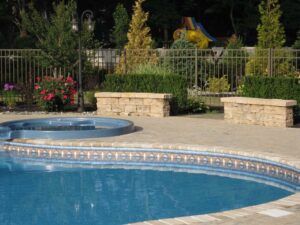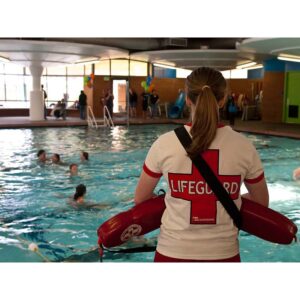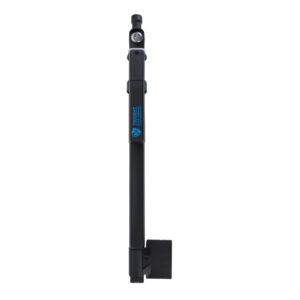Owning a pool can be a source of endless fun and relaxation, but it also comes with significant responsibilities, particularly when it comes to safety. Homeowners must be vigilant in implementing measures to prevent accidents and ensure a safe swimming environment for family and guests. This article provides essential pool safety tips for homeowners, covering everything from pool enclosures and fencing to supervision practices, safety equipment, and insurance considerations.
Key Takeaways
- Proper pool enclosures and fencing are crucial for preventing unauthorized access and accidental drownings, especially for homes with young children.
- Effective supervision and educating children on pool hazards are key to preventing accidents; consider having a designated lifeguard during pool parties.
- Invest in essential safety equipment such as pool covers, alarms, and safety top caps to enhance protection when the pool is not in use.
- Regular maintenance of the pool area and equipment, including electrical safety checks, is necessary to avoid potential hazards and equipment malfunctions.
- Understand the legal implications of owning a pool, such as ‘attractive nuisance’ laws, and consider increasing liability insurance coverage for added protection.
Understanding Pool Enclosures and Fencing
Choosing the Right Type of Pool Enclosure
Selecting the appropriate pool enclosure is crucial for both safety and aesthetics. The location of your pool significantly influences the type of enclosure needed. Avoid areas with uneven surfaces or excessive exposure to elements such as wind and debris from trees. Consider the different materials available for pool enclosures, such as glass, mesh, vinyl, and metal, each offering varying degrees of privacy and security.
When planning your pool enclosure, keep in mind the following guidelines:
- The gate should open outwards, away from the pool area.
- The gate latch release knob should be out of reach of children.
- The fence should be at a minimum height as per local regulations.
- Ensure there is no more than 4 inches of clearance from the ground to the bottom of the fence.
Always verify compliance with local safety regulations to ensure your pool enclosure meets legal requirements. This not only ensures the safety of your family and guests but also helps avoid potential legal issues.
Pool Fencing Options for Enhanced Safety
When it comes to enhancing pool safety, selecting the right fencing is crucial. Pool fencing options include materials like glass, mesh, vinyl, and more, each with its own cost implications. The choice of material not only affects the aesthetics but also the safety and compliance with local regulations.
For those with children, a fence with a self-closing door and a high-positioned locking mechanism is recommended to keep the pool area secure. It’s important to ensure that the gate opens outwards, and the latch release knob is out of reach of young children. Additionally, the fence should be of a minimum height and the perimeter must be clear of climbable objects.
Compliance with local safety regulations is not just about legality; it’s about ensuring the well-being of family and guests. Installing door alarms on all doors leading to the pool area can provide an extra layer of security.
Regular inspection and maintenance of the pool gate are essential. A properly functioning gate is a critical component in preventing accidental drownings, yet only a fraction of pool owners conducts annual checks. Investing in quality fencing and diligent upkeep can make all the difference in creating a safe pool environment.
Compliance with Local Safety Regulations
Ensuring that your pool meets local safety regulations is not only a legal requirement but also a critical step in safeguarding your family and guests. Local authorities often have specific guidelines for pool enclosures, fencing, and safety equipment. For instance, a safety fence with a locking gate that meets certain height requirements, such as four feet, is commonly mandated. It’s essential to verify that your pool complies with the Consumer Product Safety Commission’s standards and any state-specific regulations, like Florida’s requirement for using a “Nationally Recognized Aquatic Training Program” for lifeguard certification.
To assist homeowners in meeting these standards, here is a simple checklist:
- Ensure pool gates are self-closing and self-latching
- Install entrapment protection devices and conduct regular safety checks
- Use safety vacuum release systems to prevent suction entrapment
- Regularly review and update your pool’s safety features to comply with the Virginia Graeme Baker Federal Pool and Spa Safety Act
By proactively addressing these regulations, homeowners can significantly reduce the risk of accidents and ensure a safe swimming environment for everyone.
Implementing Effective Supervision Practices
Establishing a Supervision Strategy
Ensuring the safety of swimmers, especially children, requires a well-thought-out supervision strategy. Constant supervision is the cornerstone of preventing accidents. Adults supervising should be free of distractions and focused on the pool area at all times. It’s crucial to have a clear view of the entire pool, and to establish rules such as ‘no swimming alone’ and ‘ask for permission before entering the pool area’.
A designated supervisor, whether a family member or a hired lifeguard, should be responsible for monitoring swimmers. This role should rotate among adults to maintain vigilance.
In addition to active supervision, having the right equipment on hand is vital. This includes reaching or throwing equipment, a cell phone for emergencies, life jackets, and a first aid kit. Regular safety briefings and checklists can reinforce the importance of these practices. Below is a list of key supervision strategies:
- Enroll family members in water orientation and learn-to-swim courses.
- Secure the pool with appropriate barriers.
- Check the water first if a child is missing.
- Ensure proper chemical balance by testing the water regularly.
Educating Children on Pool Hazards
It is crucial to educate children on the potential hazards associated with swimming pools. This education should include understanding the risks of pool drains, which can pose serious threats if not properly safeguarded. Parents are encouraged to educate their children about these dangers and to encourage safe swimming practices.
Children, especially those under the age of five, are at a higher risk of drowning. It is essential to teach them to stay away from pool drains and to swim with a buddy whenever possible.
By instilling a sense of awareness and respect for the water, children can enjoy swimming while minimizing the risk of accidents. Here are some key points to cover when teaching pool safety to children:
- The importance of swimming with an adult present
- Never running or engaging in horseplay around the pool area
- The correct way to enter and exit the pool
- Recognizing and avoiding potential hazards, such as slippery surfaces and pool covers
The Role of Lifeguards in Residential Pools
While not all residential pools will have lifeguards, their presence can significantly enhance safety. Lifeguards are trained to monitor swimming areas and maintain safety at all times, ensuring that any emergencies are dealt with swiftly and effectively. For homeowners who host frequent pool gatherings or have a large number of swimmers, hiring a qualified lifeguard could be a prudent decision.
Lifeguards are not just for public pools; they can be a critical part of a residential pool’s safety plan, especially during parties or when children are present.
Homeowners should consider the following when deciding on lifeguard services for their pool:
- The size and depth of the pool
- The typical number of swimmers
- The age and swimming ability of regular pool users
- The frequency of pool uses for gatherings
It’s also important to verify the qualifications and certifications of any lifeguard hired to ensure they are capable of handling potential poolside emergencies.
Incorporating Safety Equipment and Accessories
Essential Safety Gear for Pool Owners
Ensuring the safety of your pool area involves equipping it with the right gear. Adequate safety equipment is vital for preventing accidents and facilitating quick responses to emergencies. Essential items include pool covers to prevent unsupervised access, life rings, and reaching poles for rescues. It’s also important to have a well-stocked first aid kit nearby.
- Pool Covers
- Life Rings
- Reaching Poles
- First Aid Kit
Properly maintained and accessible safety equipment can make a significant difference in the event of an accident. Make sure all potential rescuers know where the equipment is stored and how to use it effectively.
Additionally, consider adding alarms that alert you to unexpected water disturbances, and ensure all swimmers have appropriate flotation devices. Regularly check and maintain all safety gear to ensure it’s in good working condition.
Featured Pool Safety Products
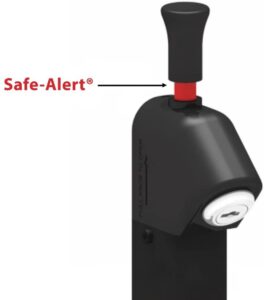
Here at NMI, we sell pool safety latches such as the AquaLatch which has a magnetic closing feature with a red knob that appears when the latch is not engaged, it fits any gate, and the angled keyhole prevents water and debris from damaging the lock. It comes in 10′ and 20′ height in black or white.
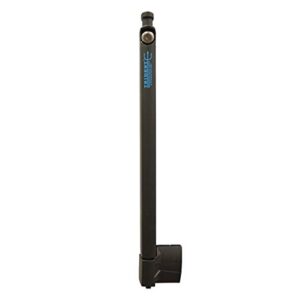
There’s also the Trident Magnetic Pool Latch with its sleek design for easy installation. It also is rust resistant and has an angled keyhole design. The Safe Notch feature engages when someone steps or climbs on the gate to ensure it is closed. We carry both sizes and colors available.
The LockeyUSA SUMO is a magnetic safety gate latch for pedestrian gates. It features a waist-level lock where you can lock the latch with a key to prevent access while the top pull design helps prevent children and pets from entering the area. This latch can be easily mounted on metal, vinyl and wood gates along with being vertically and horizontally adjusted. The SUMO is manufactured from stainless steel aluminum, and non-rusting fiber-reinforced polymers and are backed with a limited lifetime. Secure your gate with the LockeyUSA SUMO. It is suitable for mounting on both taller pool gates, normal size gates, and comes in 11′ and 21′ in black only.
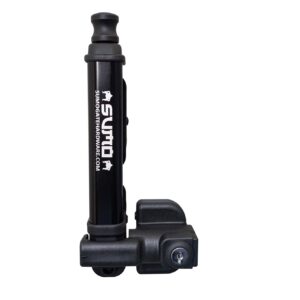
The Nylon Magnetic Pool Latch Set comes in black and white and measures 10″. It can be installed both vertically and horizontally and works with right-handed and left-handed gates. Its angled keyhole allows for easy-access and can be used with taller fence profiles.
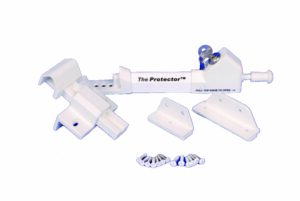
Installing Alarms and Pool Covers
Ensuring the safety of your pool area extends to installing alarms and pool covers, which serve as critical components in preventing accidents. Pool alarms are not just a supplementary safety measure; they are essential for alerting homeowners of unsupervised access to the pool area. Products like the Nationwide Industries Trident Safe Signal Pool Latch combine audible and visual alarms to indicate when a gate is not properly latched, offering an additional layer of security.
When it comes to pool covers, they provide multiple benefits beyond keeping the pool clean. They act as a physical barrier to prevent accidental falls into the water, especially for children and pets. It’s important to choose a pool cover that is sturdy, fits well, and complies with safety standards.
A well-maintained pool gate, complemented by reliable alarms and a secure pool cover, forms a robust defense against potential pool-related incidents.
Here’s a quick safety checklist for pool gates and covers:
- Ensure the pool gate latches automatically and is self-closing.
- Regularly inspect gate hardware for wear and proper function.
- Verify that pool alarms are operational, and batteries are fresh.
- Choose pool covers that are designed for safety and can support weight.
- Always remove the pool cover completely before swimming to avoid entrapment.
Maintaining Pool Area and Equipment
Regular Pool Maintenance Checklist
A regular pool maintenance checklist is essential for ensuring a safe and enjoyable swimming environment. Weekly cleaning routines should include skimming the water’s surface for floating debris, vacuuming the pool floor, and brushing the pool walls. It’s also crucial to clean the filter and check the water and pH levels to prevent corrosive damage to the pool’s surface and equipment.
Proper maintenance planning can prevent higher costs and time spent on repairs. Ensure easy access to pool components and schedule seasonal maintenance, especially preparing the pool for winter.
Experts recommend testing the pool’s pH level during the weekly cleaning process. The alkalinity should be balanced to avoid making the water too acidic or reducing the effectiveness of chlorine. This balance is vital for swimmer safety and the longevity of the pool structure and accessories.
Inspecting and Repairing Pool Deck and Porch
The integrity of the pool deck and porch is crucial for safety and aesthetics. Regular inspections can identify potential hazards, such as cracks, loose railings, or rotting wood, which may compromise the structure’s stability. It’s important to address these issues promptly to prevent accidents and maintain the area’s appearance.
When inspecting your pool deck and porch, look for signs of wear and tear. Pay special attention to areas that are frequently exposed to water or have high foot traffic, as these are more susceptible to damage.
Here is a basic checklist for homeowners to follow during inspection:
- Check for any visible cracks or damage on the surface.
- Ensure that all railings and balusters are secure.
- Look for signs of wood rot or termite damage on wooden decks.
- Examine the integrity of steps and risers.
- Assess the condition of deck coatings or sealants.
If repairs are needed, consider the type of material your deck is made of. For instance, PVC decking offers superior fade, stain, and moisture resistance, while materials like concrete lumber provide a low-maintenance alternative to traditional wood. Always consult with a professional for major repairs to ensure they are carried out safely and in compliance with local building codes.
Ensuring Electrical Safety Around the Pool
Electrical safety around pools is a critical aspect of pool ownership. Proper installation and maintenance of electrical systems are essential to prevent accidents. The placement of electrical components should be carefully considered, ensuring they are a safe distance from water sources to minimize exposure to moisture.
Regular inspections and maintenance checks are vital to ensure that all electrical systems are functioning correctly and safely. Wear and tear over time can lead to potential hazards, making proactive upkeep crucial.
It’s also important to stay informed about updates to electrical safety standards and regulations. As technology and safety requirements evolve, ensuring that your pool’s electrical system complies with the latest codes is necessary for continued safety. Here’s a simple checklist for electrical safety around pools:
- Schedule regular electrical inspections.
- Ensure all electrical components are properly installed and away from water.
- Keep overhead electrical lines clear of the pool area.
- Stay updated on electrical safety standards and regulations.
Insurance and Liability Considerations
Understanding ‘Attractive Nuisance’ and Insurance
When it comes to pool ownership, understanding the concept of ‘attractive nuisance‘ can be crucial for legal and financial protection. The term refers to a legal doctrine that places a higher level of responsibility on homeowners to secure potentially dangerous conditions on their property that are likely to attract children. A swimming pool is a classic example of an attractive nuisance.
To mitigate the risks associated with attractive nuisances, homeowners should consider additional insurance coverage. Standard homeowners’ insurance policies may not provide sufficient liability protection for incidents related to the pool. It is advisable to review your policy and consider purchasing a personal umbrella insurance policy for extended coverage.
An umbrella policy becomes effective after the limits of the primary homeowner’s insurance are reached. This additional coverage is essential for covering potential legal judgments and attorney fees. On average, a $1 to $2 million umbrella policy costs around $380 annually, a small price for significant peace of mind.
Lastly, it’s important to stay informed about the insurance requirements and options available. Regularly revisiting your insurance policies ensures that you are neither over- nor underinsured, especially as life situations change.
Increasing Liability Coverage for Pool Owners
Owning a pool can significantly affect your homeowner’s insurance. It’s recommended to increase your liability coverage to protect against potential pool-related incidents. A standard homeowner’s policy may not suffice, especially considering pools are seen as ‘attractive nuisances’ that can lead to injuries or worse.
Additional insurance, such as a personal umbrella policy, can provide the extra coverage needed for peace of mind.
It’s also wise to consider a home warranty that includes major pool repairs to mitigate future expenses. Remember, the novelty of a pool may wear off, but the responsibility of ownership does not.
The Need for a Separate Pool Inspector
When purchasing a home with a pool, the expertise of a traditional home inspector may not suffice. A certified licensed pool inspector is crucial for a comprehensive assessment, including a leak detection test within the pool’s shell. This specialized inspection goes beyond the surface, examining the pool’s interior, plumbing, electrical systems, and compliance with safety regulations.
The additional cost of a separate pool inspector is a worthwhile investment for any homeowner. It ensures that all aspects of the pool, from the main drain to the deck surfacing, meet federal, state, and local standards, safeguarding against potential hazards.
Understanding the detailed scope of a pool inspection can help homeowners make informed decisions. Here’s a brief overview of what a pool inspector typically checks:
- Operating systems (plumbing and electrical)
- Pool’s interior surface and main drain
- Deck surfacing
- Fencing and other safety-related issues
Awareness of these inspection points can prevent future complications, ensuring a safe and enjoyable pool environment.
Understanding the intricacies of insurance and liability is crucial for safeguarding your business. At National Metal Industries, we’re committed to helping you navigate these complex areas with ease. Don’t leave your company exposed to unnecessary risks. Visit our website to learn more about our products and services and get in touch with our experts for a personalized consultation. Protect your business today by ensuring you have the right coverage in place.
Conclusion
As we wrap up our discussion on pool safety tips for homeowners, it’s clear that the responsibility of maintaining a safe swimming environment cannot be overstated. From installing proper fencing and safety barriers to ensuring adult supervision and increasing liability coverage, each measure plays a crucial role in preventing accidents. Remember, the joy of owning a pool comes with the duty to protect not just your family but also your guests. By adhering to the guidelines and safety practices outlined in this article, you can enjoy the pleasures of your pool with peace of mind, knowing that you’ve taken the necessary steps to create a secure and enjoyable space for everyone.

